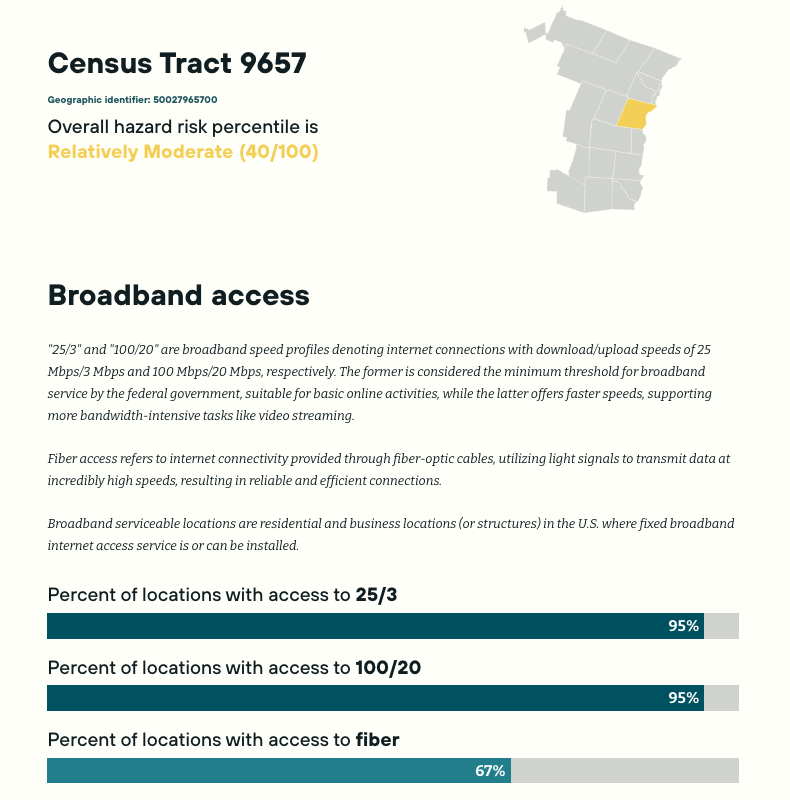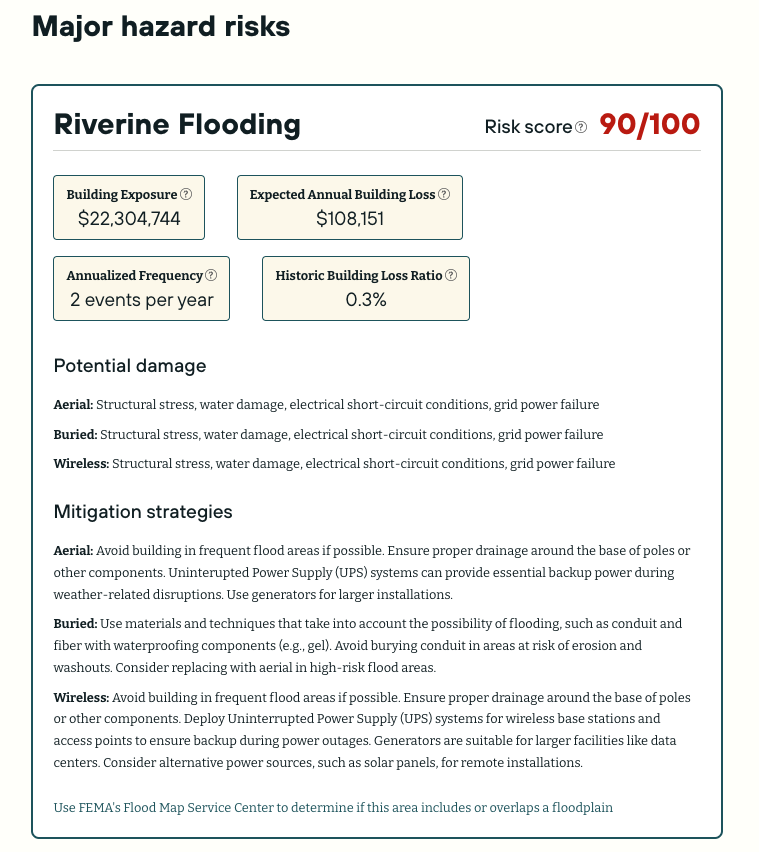Introducing the Broadband Climate Risk Mitigation Tool
The Center on Rural Innovation has developed a new web application designed to help communities and organizations make informed decisions about broadband deployment while considering natural hazard risks.
The Center on Rural Innovation has developed a new web application, the Broadband Climate Risk Mitigation Tool, designed to help communities and organizations make informed decisions about broadband deployment while considering natural hazard risks.
Broadband networks play a critical role in connecting communities and fostering economic growth. However, networks face numerous challenges posed by extreme weather. Wildfires, extreme temperatures, flooding, tornadoes, hurricanes, and other weather-related events can disrupt and damage broadband infrastructure, leading to service outages and hindering emergency response efforts.
Building broadband infrastructure today that is meant to last introduces a host of challenges and uncertainties, especially considering the evolving frequency and severity of natural disasters. Our tool combines hazard risk data with broadband access information so communities can maximize the resilience and effectiveness of their broadband infrastructure projects funded under the Broadband Equity Access and Deployment (BEAD) program.
Our accompanying report, “Understanding disaster resiliency factors for broadband deployments,” provides a deeper dive into our research and innovative methodologies.
With the Broadband Climate Risk Mitigation Tool, users can access a comprehensive set of resources to evaluate and address weather- and climate-related risks during broadband infrastructure planning and deployment.
Our application enables the following:
1. Initial hazard screening and identification: By inputting location data, users can assess potential hazards affecting the proposed broadband infrastructure. Hazard risk and broadband access data are overlaid so that users can identify hazard risks in areas with the greatest broadband need.

2. Mitigation strategies: From selecting appropriate technology platforms to adopting alternative siting and redundancy measures, the tool offers high-level recommendations to safeguard broadband assets.

Increasing the resilience of our broadband and telecommunications networks is of vital importance, but is also a challenging endeavor that requires balancing priorities in the funding and policy realms. With the Broadband Climate Mitigation Tool, local leaders can leverage granular, location-based data to design more climate-resilient networks with BEAD funding, creating more resilient communities in the face of natural disasters.
Join us for a webinar on Aug. 31 as we share our findings and recommendations from our report, “Understanding disaster resiliency factors for broadband deployments,” and the Broadband Climate Risk Mitigation Tool.
This post was made possible by support from Connect Humanity.
Stay connected
At the Center on Rural Innovation, we are working with rural communities across the country to help position them to thrive in the 21st-century tech economy.
To learn more about our work in this space, be sure to sign up for our newsletter.
Have more questions about broadband? Reach out to our team at broadband@ruralinnovation.us.
